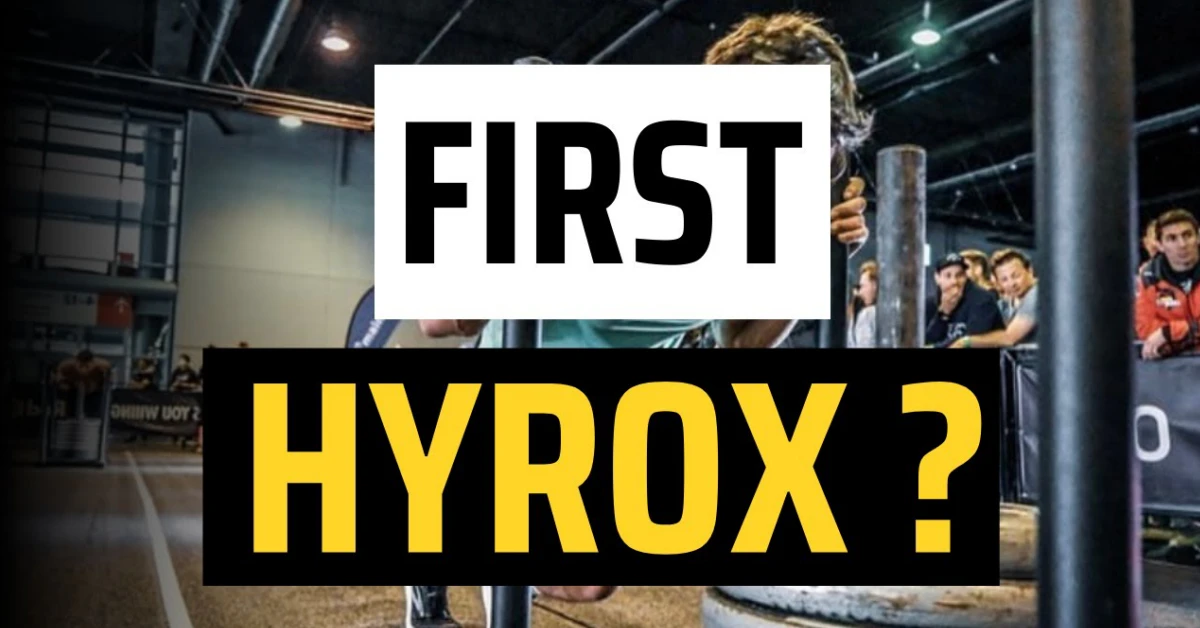Hey there! If you’ve ever watched a Hyrox race on TV and thought, “That looks intense, but maybe I could do it,” you’re not alone. The good news? You absolutely can. All you need is a clear, bite‑size plan that balances running, functional strength, and smart recovery. In the next 15‑plus minutes, I’m going to walk you through a beginner Hyrox workout that’s easy to follow, safe, and—yes—actually fun. Grab a water bottle, settle in, and let’s get you race‑ready.
Why It Matters
Hyrox isn’t just another fitness fad; it’s a full‑body challenge that mixes run‑run‑run with stations like sled pushes, wall balls, and farmer’s carries. Think of it as a marathon for your muscles. Without a dedicated workout plan, you might end up sore, burnt out, or—worst of all—injured before the big day. A well‑structured beginner Hyrox workout gives you three big gifts:
- Confidence: Knowing you’ve trained each movement means less nervous energy on race day.
- Balanced fitness: You’ll improve cardio, strength, grip, and mobility all at once.
- Injury prevention: Gradual progress keeps joints and tendons happy.
And hey, if you ever wonder “what is Hyrox workout?” you can dive deeper on our what is Hyrox workout page.
Core Components
Think of a Hyrox race as a pizza—each slice (or component) is essential for the full flavor.
| Component | What It Targets | Beginner Format |
|---|---|---|
| Aerobic Base | Endurance for the 1 km runs, SkiErg, rowing | 30‑minute steady‑state run + 2 × 400 m run intervals (StartHyrox.com) |
| Functional Strength | Sled push/pull, wall balls, lunges | Body‑weight circuits → light‑weight farmer’s walk |
| Grip & Core | Farmer’s carry, sandbag lunges, overall stability | 3 × 30‑sec farmer’s carry with water bottles |
| Mobility & Recovery | Injury prevention, movement quality | 10‑minute dynamic warm‑up + 5‑minute cool‑down stretch |
This matrix is your cheat‑sheet. Each week we’ll touch on all four pillars, so you’re never neglecting a key area.
4‑Week Schedule
Below is a simple, progressive 4‑week plan. You’ll train three days a week (Monday, Wednesday, Friday) and rest or do light activity on the other days. Feel free to swap days around as long as you keep the “work‑rest‑work‑rest‑work” rhythm.
Week 1 – Build the Foundation
Monday – Easy Run + Bodyweight Circuit
- Warm‑up: 5 min dynamic stretches (leg swings, arm circles).
- Run: 2 km at a comfortable, conversational pace.
- Circuit (2 rounds): 10 bodyweight squats, 8 push‑ups, 30‑sec plank.
- Cool‑down: 5 min static stretching (quad, hamstring, chest).
Wednesday – SkiErg / Row Intervals
- Warm‑up: 5 min light jogging.
- Intervals: 1 min intense on SkiErg, 1 min easy; repeat 8 times.
- Mobility finisher: 5 min hip‑openers and shoulder rolls.
Friday – Hyrox‑Style Circuit
- Warm‑up: 5 min jump rope (or simulated).
- Circuit (2 rounds, 45 sec work / 15 sec rest): jogging in place, mountain climbers, wall push‑ups, reverse lunges, farmer’s carry with two 2‑L water bottles.
- Finish with a 400 m easy jog.
- Cooldown: full‑body stretch.
Week 2 – Add a Bit More Volume
Same three days, but increase each segment by roughly 10 %:
- Run 2.2 km on Monday.
- Add two extra SkiErg intervals (total 10).
- Extend the Friday circuit to 3 rounds and add a 30‑sec wall‑ball hold (use a 4 kg ball).
Week 3 – Introduce Light Weights
Now it’s time to sprinkle in some hyrox workout weights. Grab a pair of light dumbbells (≈ 8 kg) or kettlebells.
- Monday: After your 2.4 km run, do 3 × 10 goblet squats.
- Wednesday: Replace two SkiErg intervals with 500 m row + 20‑kg farmer’s carry (30 sec).
- Friday: Circuit now includes 10 kg kettlebell swings (15 reps) before the farmer’s carry.
Week 4 – Peak & Test
The final week is a mini‑simulation of a race. Keep the intensity high but cut total volume so you feel fresh.
- Monday: 1 km run, then a “mini‑Hyrox” circuit—one round of each station (SkiErg 500 m, sled push with a 20 kg weight, sled pull, burpee‑broad jumps, 500 m row, 100 m farmer’s carry, 50 m sandbag lunges, 30 wall balls). Finish with a light jog.
- Wednesday: Active recovery—easy 30‑min bike or swim, plus a full‑body stretch routine.
- Friday: Race‑day rehearsal—run 1 km, then all eight stations at a comfortable pace. Record times; you’ll see how far you’ve come.
By the end of week 4 you should be able to jog a kilometre in under 5 minutes and complete the circuit in roughly 20 minutes. That’s a solid start for a first Hyrox!
Choosing the Right Hyrox Workout Weights
Weight selection can feel like a guessing game, but there’s a simple rule: start light, master form, then add 2 kg when it feels easy. Here’s a quick guide:
- Wall Balls: Women — 4 kg (open division) or 6 kg (pro); Men — 6 kg (open) or 9 kg (pro).
- Farmer’s Carry: 12 kg kettlebells for women, 16 kg for men as a beginner.
- Sled Push/Pull: Use a sled loaded with 20‑30 kg total for starters; increase gradually.
According to a recent study on progressive overload, adding small weight increments every 1‑2 weeks leads to consistent strength gains without overloading joints.
Common Mistakes & How to Dodge Them
Even seasoned athletes stumble. Here are the pitfalls I see most beginners make—and how to avoid each one.
Skipping the Warm‑Up
Jumping straight into a sled push can jolt your shoulders and knees. Spend at least five minutes warming up—dynamic leg swings, arm circles, and a quick jog gets the blood flowing and reduces injury risk.
All‑Out Sprint on the First Kilometer
It’s tempting to start fast, especially with the crowd’s energy. But Hyrox is a marathon, not a 100‑meter dash. Aim for a steady pace you could hold for the whole race. The “don’t start too fast” tip from Hyrox UK is gold.
Ignoring Grip Fatigue
Farmer’s carries and sled pulls chew up your forearms. Include grip‑specific drills—dead hangs, towel pull‑ups, or light farmer’s walks—early in your program. Your hands will thank you on race day.
Neglecting Recovery
Hydration, quality sleep, and at least one full rest day per week are non‑negotiable. Recovery isn’t a luxury; it’s a performance multiplier.
Tracking Progress & Knowing When to Level Up
The best way to stay motivated is to see tangible improvement. Here’s a simple tracking sheet you can copy into a notebook or an app:
- Run Time: Record minutes per kilometre.
- Circuit Time: Total time to finish the Friday circuit.
- Weight Used: Note any added weight for each station.
- RPE (Rate of Perceived Exertion): Scale 1‑10 after each workout.
After four weeks, compare your numbers. If you can run 1 km under 5 minutes and complete the circuit in under 20 minutes with good form, you’re ready to graduate to a fuller Hyrox workout plan. That next level will add longer runs, heavier sled work, and more interval training.
Resources & Next Steps
Ready to keep the momentum going? Here are the links that helped shape this guide—and will help you stay on track:
- Hyrox workout – a deeper dive into each station.
- What is Hyrox workout – the basics explained for total newbies.
- Hyrox workout plan – a downloadable 12‑week program once you’ve mastered the beginner phase.
- Hyrox workout weights – guide to picking the right load for each movement.
Remember, the journey to your first Hyrox race is a marathon of tiny, consistent steps. Trust the process, listen to your body, and celebrate every small win—whether it’s an extra 10 seconds on your run or a smoother wall‑ball toss.
Conclusion
We’ve covered why a dedicated beginner Hyrox workout matters, broken down the four essential pillars, walked through a 4‑week schedule, and even tackled weight selection, common slip‑ups, and progress tracking. The best part? All of this can be done with minimal equipment, a bit of dedication, and a friendly attitude.
If you start today, follow the plan, and tweak as you learn, you’ll be standing at the start line of your first Hyrox event feeling strong, prepared, and excited. So lace up those shoes, grab a water bottle, and let’s turn that “maybe someday” into “I’m doing it tomorrow.” You’ve got this!


















Leave a Reply
You must be logged in to post a comment.